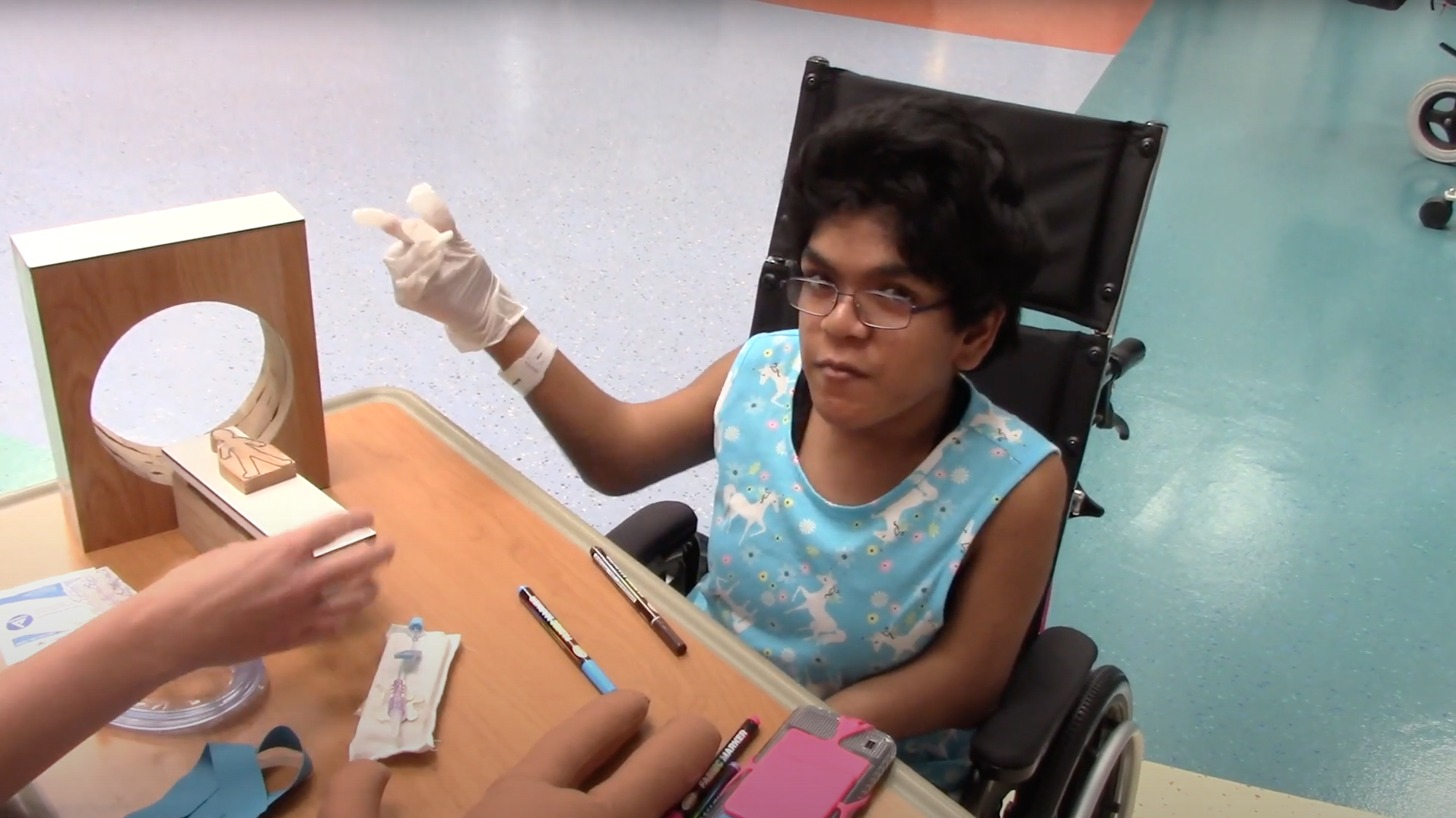At Ranken Jordan Pediatric Bridge Hospital, play is an important part of every day for kids. Medical play, another level of play, involves using real and pretend medical items to reduce fear and help kids cope with treatments and tests.
Ranken Jordan’s child life specialists educate kids about why they’re in the hospital and help them cope with their experiences through medical play. Play is familiar and comforting to kids in a new situation.
Research shows that medical play helps kids feel more comfortable in the hospital. It also helps kids cope with health care in the future.
Where Medical Play Meets MRIs
Kids at Ranken Jordan experience many tests and treatments—including MRIs, which can be loud and scary for kids. MRIs require kids to lie still in a confined space for up to 90 minutes.
Recognizing the importance of helping children better handle their experiences, the Ranken Jordan child life specialist team looked into buying a toy model MRI machine. However, the cost was daunting.
Since the hospital has a limited budget, Katie Noll, a certified child life specialist, decided to make a special request of the St. Louis Woodworkers Guild to build one instead.
“The Guild has built many toys and figurines for our kids to paint and the kids love it,” Katie says. “That sparked the idea that we reach out to the Guild to ask them to make a model MRI.”
The St. Louis Woodworkers Guild has generously provided dozens of handmade toys to kids at Ranken Jordan every month for several years. In addition, the volunteer woodworkers have stepped in to fill other special build requests from Ranken Jordan such as a finger ladder and wheelchair-accessible planter boxes.
But this MRI project may have been the most complex request, says Bill Schuchat, vice president of the Guild.
“I had never built one of these before and it required some research online to find examples of model MRIs,” Bill says. “I took parts of each, created a drawing and built it. It was heartwarming to see the MRI model being used and the joy the kids have playing with it.”
Toys Become Tools for Healing
The small wooden MRI model includes a table that slides in and out of the circular “machine.” Kids place a doll on the table and simulate the test experience.
“A lot of kids who come here have had MRIs before that may have been a negative experience for them,” Katie explains. “This toy MRI model allows them to act out the experience. Medical play using this MRI model is a teaching tool that helps a child process and debrief about their experience. It helps them express feelings and concerns about their medical care and teaches them how to cope, which makes for a healthier child overall.”
“We make toys from the simple to the complex to meet the spectrum of children’s needs,” says Dan Linder, the Guild’s toy committee chair. “This was our first model MRI request and it definitely filled a need. Sometimes the simple things we do help fill a big void. Using his artistic ability and thought, Bill hit it out of the ballpark with the MRI model he built.”
Katie and the child life specialist team agrees. “We were lucky to be able to tap into the connection with the St. Louis Woodworkers Guild and appreciate their time and effort to make this MRI model for our kids,” Katie says. “When children can play and explore with medical equipment, it gives them a sense of mastery and control over a situation when lots of times children in the hospital don’t have a lot of control.”
Child life specialists use medical play in various ways. For example, before kids get an IV, they may practice on a doll using a tourniquet and alcohol wipes. “It’s their turn to be the doctor,” Katie says. “Even taking their blood pressure can be stressful on kids. So we give kids a blood pressure cuff, a stethoscope and a bear and kids take over to listen to the bear’s heart. It makes them feel less scared and less stressed. The child can create a scenario to tell their own story through play.”
Medical play is vitally important to kids because it helps them cope with hospitalization, Katie adds. “It helps them feel empowered, promotes wellness, and is a form of healing.”






